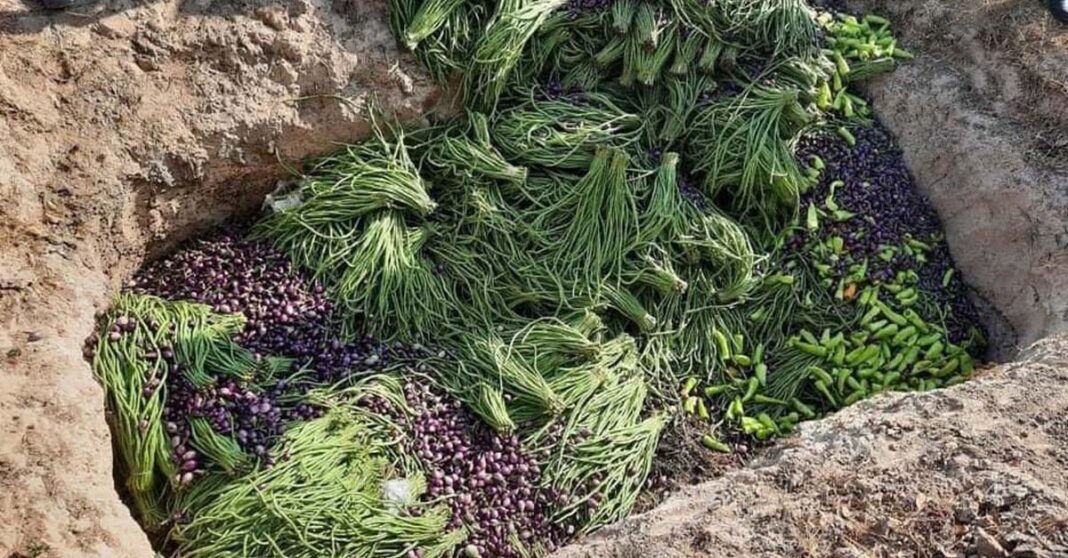Police and provincial authorities in Laos have the authority to inspect and seize all illegal goods along the border, but why has food been dumped and burned?
Amid the rising cost of living and skyrocketing food prices in Laos, it might sound strange to consider that the government is, in fact, burning, burying, and blasting large quantities of food.
Nevertheless, Vientiane Mai reports that over 3,000 kilograms of edible vegetables were destroyed by tax and quarantine officials on Monday, all of which had been illegally transported to Laos via the Lao-Thai Friendship Bridge.
Customs officials in Laos seized vegetables brought into the country via a bus from Thailand without proper customs documentation, import licenses, or phytosanitary certificates from their point of origin.

The vegetables included onions, tomatoes, zucchinis, bell peppers, cucumbers, cabbages, and others, totaling almost 4,000 kilograms and valued at LAK 19 million (USD 1,274).
With food prices already so high, and looming issues of climate change and global supply chain disruption threatening to wreak even more havoc, can we still afford to destroy tons of edible food?
The authorities have their reasons for doing this, of course: to crack down on smuggling operations, to ensure health and hygiene safety for consumers, and to protect producers and the economy at large from the dumping of goods.
In July, authorities in Savannakhet Province destroyed some 9,000 kilograms of smuggled pork that originated in Vietnam, for example.
The pork was smuggled into Laos hidden inside a truck transporting gypsum, with authorities uncovering 422 boxes containing meat weighing 9,724 kilograms.
While a cautious approach has required the destruction of intercepted illegal food imports, there may be alternatives to manage either smuggled food or goods, such as returning the food or goods to their origin, composting edible items, or doing on-site testing to alleviate health and safety concerns.
Problematically, however, some authorities choose to burn and bury products inclusive of packaging, which can lead to serious environmental issues and pollution.

So far this year, authorities at the Lao-Thai Friendship Bridge have seized and destroyed over 5,492 kilograms of vegetables and plants valued at USD 2,122. It is worth noting that this destruction of illegal goods is not an uncommon practice, as in Thailand in 2018 when Nong Khai Customs destroyed copyright infringement products valued at over BHT 56 million.
And smugglers frequently see opportunities and vulnerabilities in natural entryways along borders to import those products illegally, thereby avoiding taxes. Demand from the destination country contributes to those actions, with the rising cost of food in Laos likely to motivate further smuggling attempts.
Given these impending realities, it is important to think about alternative ways of dealing with intercepted food rather than destroying and dumping it while the nation is still suffering economically.
Perhaps, much of the smuggled food could be tested for safety and then distributed to hundreds of people in need.



